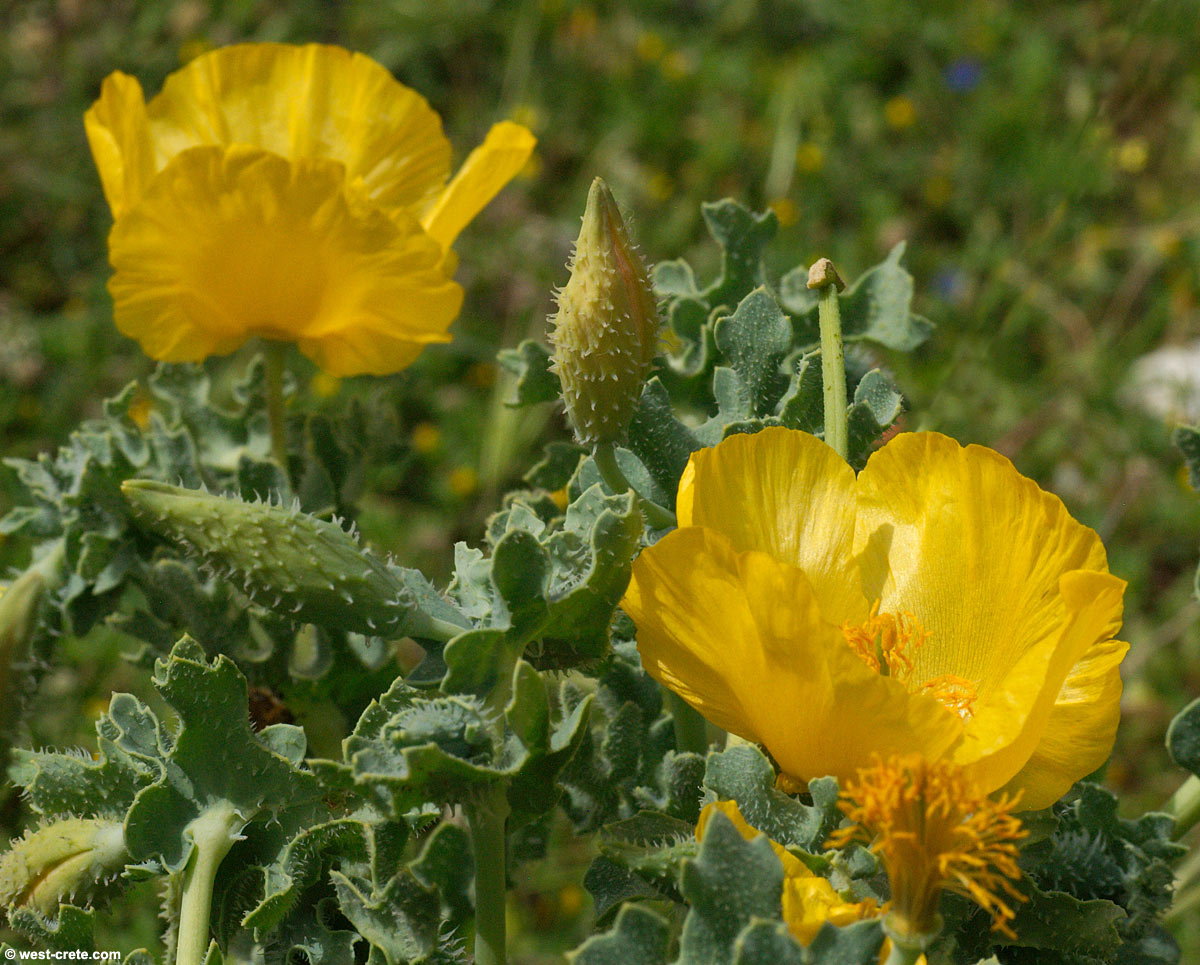
Glaucium flavum, commonly known as yellow horned poppy, is a fascinating and eye-catching plant that belongs to the Papaveraceae family. This perennial herbaceous plant is native to the Mediterranean region and is renowned for its unique characteristics and stunning beauty.
In this article, we will explore 15 mind-blowing facts about Glaucium flavum that will not only enhance your knowledge about this remarkable plant but also leave you in awe of its wonders. From its striking yellow flowers to its medicinal uses, Glaucium flavum holds a prominent place in the world of plants.
So, sit back, relax, and prepare to be amazed as we delve into the intriguing world of Glaucium flavum.
Key Takeaways:
- Glaucium flavum, also known as Yellow Horned Poppy, is a resilient plant native to the Mediterranean region with beautiful yellow flowers and medicinal alkaloids.
- This coastal beauty, Glaucium flavum, has historical, artistic, and pharmaceutical significance, making it a desirable addition to gardens and a favorite among pollinators.
Glaucium flavum is also known as Yellow Horned Poppy
The common name for Glaucium flavum is Yellow Horned Poppy, due to the distinctive horn-shaped appendages on the petals.
It is native to the Mediterranean region
Glaucium flavum is found in various countries in the Mediterranean region, including Italy, Greece, Turkey, and Morocco.
The plant is rich in alkaloids
Glaucium flavum contains several alkaloids, including glaucine and protopine, which have been used for medicinal and recreational purposes.
Yellow Horned Poppy has beautiful yellow flowers
The flowers of Glaucium flavum are bright yellow in color and have a distinct papery texture, adding beauty to any garden or landscape.
It has long, spiky leaves
The leaves of Glaucium flavum are long and spiky, further adding to the unique appearance of this plant.
It has been used in traditional medicine
Glaucium flavum has a long history of use in traditional medicine for various purposes, including pain relief and respiratory ailments.
Yellow Horned Poppy is a hardy plant
Glaucium flavum is a resilient plant that can tolerate dry and sandy soil conditions, making it suitable for coastal areas.
The seeds of Glaucium flavum are dispersed by wind
The plant produces capsule-like fruits that contain numerous seeds, which are dispersed by wind to ensure its wide distribution.
It has adaptive mechanisms to survive in harsh environments
Glaucium flavum has developed mechanisms to survive in harsh coastal environments, such as salt tolerance and reduced water loss through its leaves.
Yellow Horned Poppy has invasive tendencies
In some regions, Glaucium flavum is considered an invasive species, as it can outcompete native plants and disrupt ecosystems.
The plant has historical artistic references
Glaucium flavum has been depicted in various ancient artworks, including frescoes and mosaics, showcasing its cultural significance.
It is used in the production of natural dyes
The roots and flowers of Glaucium flavum have been historically used to create natural yellow dyes for textiles and artwork.
Yellow Horned Poppy is a desirable addition to coastal gardens
Glaucium flavum is often included in coastal gardens for its tolerance to salt spray, sandy soil, and its attractive flowers.
It is a favorite among pollinators
The bright yellow flowers of Glaucium flavum attract various pollinators, including bees and butterflies, making it an important source of nectar.
The plant has potential pharmaceutical uses
Research is being conducted on the medicinal properties of Glaucium flavum alkaloids, indicating their potential in treating certain diseases and conditions.
Conclusion
In conclusion, Glaucium flavum, also known as yellow horned-poppy, is a fascinating plant with numerous mind-blowing facts. From its vibrant yellow flowers to its unique horned seed capsules, this plant stands out in the botanical world. Its medicinal properties, such as its use as a pain reliever and cough suppressant, make it even more remarkable.Glaucium flavum’s ability to thrive in coastal areas with harsh conditions and saline soil is a testament to its resilience and adaptability. Its presence in different regions of the world, from Europe to North America, adds to its allure.With its rich history in traditional medicine and ecological significance, there is no doubt that Glaucium flavum is a plant worth studying and appreciating. Its beauty, usefulness, and intriguing characteristics make it an intriguing subject for both botanists and nature enthusiasts alike.
FAQs
1. Where can I find Glaucium flavum?
Glaucium flavum is commonly found in coastal regions, particularly in Europe and parts of North America.
2. What are the unique features of Glaucium flavum?
Glaucium flavum is known for its vibrant yellow flowers, horned seed capsules, and grayish-green leaves.
3. How is Glaucium flavum used in traditional medicine?
Glaucium flavum has been traditionally used as a pain reliever and cough suppressant.
4. Can Glaucium flavum be grown in gardens?
Yes, Glaucium flavum can be cultivated in gardens, especially those with coastal conditions and well-drained soil.
5. Is Glaucium flavum an invasive plant?
While Glaucium flavum has the potential to self-seed and spread, it is not classified as an invasive plant in most regions.
Was this page helpful?
Our commitment to delivering trustworthy and engaging content is at the heart of what we do. Each fact on our site is contributed by real users like you, bringing a wealth of diverse insights and information. To ensure the highest standards of accuracy and reliability, our dedicated editors meticulously review each submission. This process guarantees that the facts we share are not only fascinating but also credible. Trust in our commitment to quality and authenticity as you explore and learn with us.
